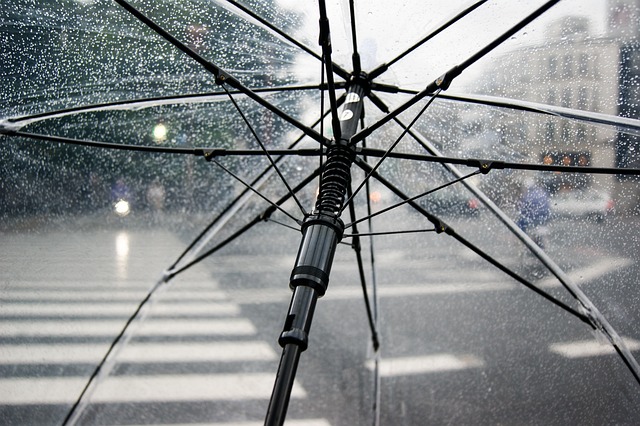Premenstrual syndrome (PMS) can be managed naturally through cold therapy, such as cold plunges or immersions in cold water. This triggers the release of norepinephrine, regulates hormones, reduces cortisol levels, and promotes balance. Regular cold water therapy improves hormonal balance, stress reduction, mood, and overall well-being during the menstrual cycle. Cold exposure influences key hormone axes like HPA and HPG, offering a natural approach to managing hormonal fluctuations and PMS symptoms. Incorporate gradual cold plunges into your routine, aiming for several short sessions daily, especially post-stress or activity, to experience benefits.
Looking for a natural way to manage premenstrual syndrome (PMS) and menstrual hormone fluctuations? Cold plunges, or cold water immersions, may be the surprising solution you’re seeking. This therapeutic practice involves briefly exposing yourself to cold water, offering a range of benefits for hormonal balance. From reducing stress hormones to potentially alleviating PMS symptoms, cold therapy is gaining recognition in the wellness world. Discover how this simple yet powerful technique can help restore equilibrium to your endocrine system.
Understanding PMS and Menstrual Hormone Fluctuations
Premenstrual syndrome (PMS) and menstrual hormone fluctuations are natural processes that many women experience. Hormonal changes during this time can lead to a range of physical and emotional symptoms, such as bloating, cramps, irritability, and mood swings. These fluctuations are primarily driven by the complex interplay between estrogen and progesterone, with their levels rising and falling in anticipation of ovulation and menstruation.
Cold therapy, particularly cold plunges or immersions in cold water, has emerged as a beneficial strategy for managing these hormonal shifts. Exposure to cold water can help regulate hormone production by stimulating the release of norepinephrine, a neurotransmitter that plays a role in stress response and mood regulation. Additionally, cold water immersion has been shown to reduce levels of cortisol, often referred to as the ‘stress hormone,’ which can further contribute to balancing endocrine health during PMS. By promoting hormonal balance and stress reduction, cold plunges offer a natural and potentially effective approach to alleviating PMS symptoms and overall menstrual well-being.
The Role of Cold Plunges in Hormonal Balance
Cold plunges, or cold water immersions, have gained popularity as a natural way to support hormonal balance and manage premenstrual syndrome (PMS). This therapy involves briefly exposing oneself to cold temperatures, often through a plunge in icy water, which triggers a series of physiological responses. When the body is exposed to cold, it initiates a stress response, leading to the release of hormones like cortisol and adrenaline. However, this initial ‘fight or flight’ reaction is followed by a subsequent decrease in stress hormones and an increase in other beneficial chemicals, such as endorphins and oxytocin. These hormonal shifts can contribute to improved mood, reduced anxiety, and better overall well-being during the menstrual cycle.
Regular cold water therapy for hormones has been linked to several benefits for endocrine health. It helps regulate the hypothalamic-pituitary-adrenal (HPA) axis, which is responsible for managing stress responses and hormone production. By promoting a balanced HPA axis, cold plunges may alleviate symptoms of PMS, including mood swings and water retention. Additionally, cold exposure for hormone regulation can boost the body’s production of human growth hormone (HGH), which plays a crucial role in recovery, muscle growth, and overall metabolic balance. This natural enhancement in HGH levels can support healthier hormone regulation, leaving individuals feeling more energized and rejuvenated during their menstrual cycle.
Scientific Evidence Behind Cold Water Therapy for Endocrine Health
The scientific community has increasingly recognized the potential benefits of cold water therapy, particularly in relation to endocrine health and hormone regulation. Cold plunges, immersing oneself in icy water for a short period, have been shown to trigger a cascade of physiological responses that can positively impact menstrual cycles and PMS symptoms. One key mechanism is the reduction of stress hormones like cortisol, often referred to as the ‘stress hormone’, which can become elevated during times of physical or emotional stress, including premenstrual periods. Cold exposure stimulates the release of norepinephrine, a neurotransmitter that helps regulate mood, energy levels, and stress responses, potentially mitigating PMS symptoms associated with anxiety and irritability.
Additionally, cold water therapy may influence hormonal balance by modulating the hypothalamic-pituitary-gonadal (HPG) axis, which governs reproductive function. The sudden exposure to cold can prompt the body to release certain hormones, including human growth hormone (HGH) and testosterone, which play crucial roles in maintaining overall endocrine health. Several studies suggest that regular cold plunges could help manage hormonal fluctuations, offering a natural and potentially effective approach for women seeking relief from PMS symptoms and menstrual irregularities.
Practical Tips for Incorporating Cold Plunges into Your Routine
Incorporating cold plunges into your routine is easier than you think. Start by gradually exposing yourself to cold water, whether it’s a quick dip in an ice-cold lake, a cold shower, or even just soaking your feet in icy water. Consistency is key; aim for several short exposures throughout the day, especially during hormonal fluctuations like PMS. You can also experiment with different techniques like contrast showers, where you alternate between hot and cold water, offering both relaxation and hormone regulation benefits.
For optimal results, try to incorporate cold therapy into your self-care routine after periods of stress or physical activity. Cold water immersion has been shown to reduce stress hormones like cortisol, promoting a sense of calm and boosting hormonal balance. Remember that even just a few minutes of exposure can make a difference, so be mindful of the effects and adjust your practice as needed.
Cold plunging emerges as a powerful tool for managing premenstrual syndrome (PMS) and navigating menstrual hormone fluctuations. By immersing oneself in cold water, this therapeutic practice stimulates hormonal balance, reduces stress hormones, and offers a natural way to alleviate PMS symptoms. With growing scientific evidence supporting its endocrine health benefits, incorporating cold plunges into your routine could be a game-changer for maintaining optimal hormone regulation. Embrace the refreshing effects of cold water therapy and unlock its potential to foster overall well-being during this transformative time.
